Colonial architecture
Colonial architecture is an architectural style from a mother country that has been incorporated into the buildings of settlements or colonies in distant locations. Colonists frequently built settlements that synthesized the architecture of their countries of origin with the design characteristics of their new lands, creating hybrid designs.[1]
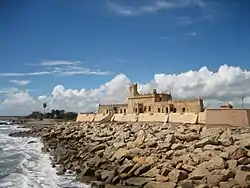
Below are links to specific articles about colonial architecture, specifically the modern colonies:
Spanish colonial architecture
Spanish Colonial architecture is still found in the former colonies of the Spanish Empire in the Americas and in the Philippines. In Mexico, it is found in the Historic center of Mexico City, Puebla, Zacatecas, Querétaro, Guanajuato, and Morelia. Antigua Guatemala in Guatemala is also known for its well-preserved Spanish colonial style architecture. Other cities known for Spanish colonial heritage are Ciudad Colonial of Santo Domingo, the ports of Cartagena, Colombia, and Old San Juan in Puerto Rico.
- North America
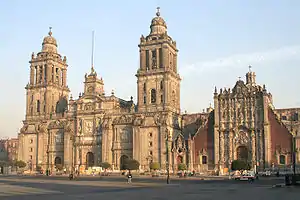
- Viceroyalty of New Spain
- Spanish Colonial architecture in Mexico
- Spanish Colonial architecture in the United States
- Spanish Colonial Revival architecture
- Caribbean
- Spanish West Indies
- Spanish Colonial architecture in Cuba
- Spanish Colonial architecture in the Dominican Republic
- Spanish Colonial architecture in Puerto Rico
- South America
- Viceroyalty of Peru, Viceroyalty of New Granada, and Viceroyalty of the Río de la Plata
- Spanish Colonial architecture in Argentina
- Spanish Colonial architecture in Chile
- Spanish Colonial architecture in Colombia
- Spanish Colonial architecture in Peru
- Spanish Colonial architecture in Venezuela
- Spanish missions in South America
- Spanish missions in Bolivia
- Spanish missions in Brazil
 Paoay Church Ilocos Sur Philippines is a fine example of Spanish Earthquake Baroque only found in the Philippines
Paoay Church Ilocos Sur Philippines is a fine example of Spanish Earthquake Baroque only found in the Philippines - Spanish missions in Paraguay
- Asia
- Spanish East Indies
- Spanish Colonial architecture in the Philippines
- Earthquake Baroque
- Bahay na Bato
Portuguese colonial architecture
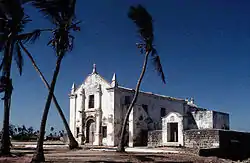
b. 1498, Mozambique
Portuguese colonial architecture is most visible in Brazil, Madeira, North Africa and Sub-Saharan Africa, Macau, Malaysian city of Malacca, city of Goa, Moluccas, and Java.
- Asia
- Portuguese Colonial architecture in India
- Portuguese Colonial architecture in Sri Lanka
- Sino-Portuguese architecture
- South America
- Portuguese Colonial architecture in Brazil
British colonial architecture
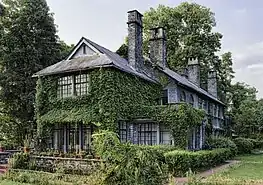
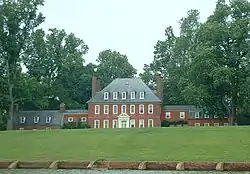
British colonial architecture are most visible in North America, the British West Indies, South Asia, Australia, New Zealand and South Africa.
- North America
- South Asia
- Australia
- Far East
French colonial architecture
.jpg.webp)
French colonial architecture is most visible in North America and Indochina.
- Indochina
- North America
- South Asia
- French colonial architecture in India
Dutch colonial architecture

Dutch colonial architecture is most visible in Indonesia (especially Java and Sumatra), the United States, South Asia, and South Africa. In Indonesia, formerly Dutch East Indies, colonial architecture was studied academically and had developed into a new tropical architecture form which emphasizes on conforming to the tropical climate of the Indies and not completely imitating the architectural language of the Dutch colonists.
- Indonesia
- North America
- South Asia
- Dutch colonial architecture in India
- Colonial architecture in Sri Lanka
- South Africa
Italian colonial architecture
Italian colonial architecture is visible in Libya, Eritrea and Somalia, and also on the Greek islands of the Dodecanese.
See also
References
- Guaita, Ovidio (1999). On distant shores: colonial houses around the world. Monacelli Press. ISBN 9781580930512. Retrieved January 26, 2014.
world colonial architecture.
External links
- Website on colonial architecture with 29,000 pictures of colonial buildings around the world by Gauvin Alexander Bailey of Queen's University and funded by the Social Sciences and Humanities Research Council of Canada and the National Endowment for the Humanities
| Wikimedia Commons has media related to Colonial architecture. |

